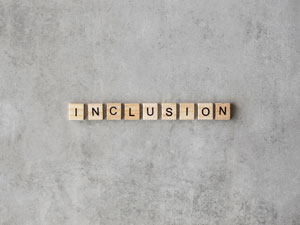 An unusual tale about a young Indian woman named Geeta has been making its way around the internet after a Bollywood film helped spark interest in her story. As a child, Geeta accidentally crossed the border into Pakistan all alone. She lived there in the care of a social welfare group for more than ten years years until last month, when she finally returned to India. Geeta is deaf and uses sign language to communicate, and the way the mainstream media has chosen to portray her is quite revealing. Major news outlets from CNN to CBS to Al Jazeera all decided to utilize the outdated term “deaf-mute” in their stories about the woman.
An unusual tale about a young Indian woman named Geeta has been making its way around the internet after a Bollywood film helped spark interest in her story. As a child, Geeta accidentally crossed the border into Pakistan all alone. She lived there in the care of a social welfare group for more than ten years years until last month, when she finally returned to India. Geeta is deaf and uses sign language to communicate, and the way the mainstream media has chosen to portray her is quite revealing. Major news outlets from CNN to CBS to Al Jazeera all decided to utilize the outdated term “deaf-mute” in their stories about the woman.
For centuries, people with different abilities, intellectual skills or physical features were forced to live on the fringes of society. They were labeled “defective” or “freaks” by the mainstream, and their families were shamed by their existence. These labels kept people isolated, and they opened the door for abuse and neglect. People who were deaf were never even given the opportunity to learn or socialize. They were denied humanity just because they were a little bit different.
Thankfully we have come a long way over the past hundred years and our culture is learning to appreciate the beauty of diversity. When our perspectives on disability began to evolve, so too did the language we use to discuss people who are disabled. While reading news stories about the “deaf-mute girl” in mainstream American outlets, however, I can’t help but feel like we’ve transported a half century backwards in our acceptance of deafness.
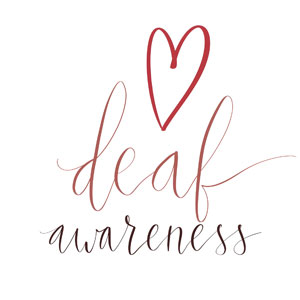 The term deaf-mute is problematic, and it is not an appropriate way to discuss a person. Calling someone “mute” silences them and strips them of their agency— it sticks a label on them that devalues their autonomy. Mute is a loaded term which carries the distinct connotation that people who are deaf don’t have anything to say.
The term deaf-mute is problematic, and it is not an appropriate way to discuss a person. Calling someone “mute” silences them and strips them of their agency— it sticks a label on them that devalues their autonomy. Mute is a loaded term which carries the distinct connotation that people who are deaf don’t have anything to say.
According to the National Association of the Deaf (NAD), a civil rights organization created by and for deaf people, “mute… means silent and without voice. This label is technically inaccurate, since deaf and hard of hearing people generally have functioning vocal chords. The challenge lies with the fact that to successfully modulate your voice, you generally need to be able to hear your own voice. Again, because deaf and hard of hearing people use various methods of communication other than or in addition to using their voices, they are not truly mute. True communication occurs when one’s message is understood by others, and they can respond in kind.”
When photos of Geeta’s family were shown to her, she recognized them, and was able to communicate that she knew who they were. Her message was successfully sent and received without words. Although major media outlets decided to call her mute, Geeta was in fact communicating and cooperating with a number of different agencies to find her way home. The ethical and appropriate terminology in this instance would be “non-verbal.” If she were unable to use sign language, she would be called “non-verbal, non-signing.”
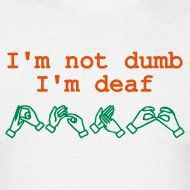 Mute is just one offensive term that regularly pops up in news stories about deafness from supposedly reputable news agencies. The archaic phrase “deaf and dumb” also occasionally makes its way into headline news. It seems obvious why deaf people do not want to be called dumb, yet clueless hearing reporters continue using the term.
Mute is just one offensive term that regularly pops up in news stories about deafness from supposedly reputable news agencies. The archaic phrase “deaf and dumb” also occasionally makes its way into headline news. It seems obvious why deaf people do not want to be called dumb, yet clueless hearing reporters continue using the term.
NAD explains: “A relic from the medieval English era, this is the granddaddy of all negative labels pinned on deaf and hard of hearing people. The Greek philosopher, Aristotle, pronounced us ‘deaf and dumb’, because he felt that deaf people were incapable of being taught, of learning, and of reasoned thinking. To his way of thinking, if a person could not use his/her voice in the same way as hearing people, then there was no way that this person could develop cognitive abilities.”
Hearing-impaired is another commonly seen phrase. When you hear the word “impaired”, what do you think? Broken? Incomplete? According to NAD “The term ‘hearing-impaired’ is viewed as negative. The term focuses on what people can’t do. It establishes the standard as ‘hearing’ and anything different as ‘impaired,’ or substandard, hindered, or damaged. It implies that something is not as it should be and ought to be fixed if possible.”
Hearing-impaired is a label created by the hearing community to be more “politically correct” about deafness. Although some deaf/ HoH individuals may choose to call themselves hearing-impaired, particularly those who lose their hearing later in life, it has gone out of favor within the larger deaf community, who (depending on their level of hearing and use of sign language) generally prefer to be called either deaf, Deaf, or hard of hearing.
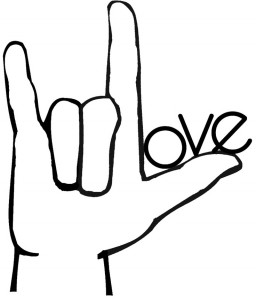 Had the reporters at the major publications glanced in the AP Stylebook, they would have seen, under the entry for Deaf: “avoid using deaf-mute.” If the journalists and editors working for mainstream outlets had any deaf consultants proof reading their articles about deafness, they almost certainly would not be running stories calling deaf people “mute” “dumb” or “impaired”. Use of these damaging terms actually says far more about the perspective of the author and the lack of diversity within the news organization than anything else.
Had the reporters at the major publications glanced in the AP Stylebook, they would have seen, under the entry for Deaf: “avoid using deaf-mute.” If the journalists and editors working for mainstream outlets had any deaf consultants proof reading their articles about deafness, they almost certainly would not be running stories calling deaf people “mute” “dumb” or “impaired”. Use of these damaging terms actually says far more about the perspective of the author and the lack of diversity within the news organization than anything else.
The story of Geeta is framed as a heroic rescue where the “deaf-mute girl” was saved by hearing parties. Geeta is portrayed as an object to be traded across borders, instead of a grown woman capable of feelings and thought. She is dehumanized in these stories to enhance the reputation of her “saviors.” She has lived her whole life without hearing or speech, and then the media choose to tell her story in a way that further denies her voice.
Deaf is not a bad word and being deaf isn’t a bad thing! All around the world, I see deaf pride bursting out of people who are finally gaining the opportunities they deserve. People who are deaf continue to fight for their rights, struggle for access, and work toward acceptance in mainstream society. Just because hearing people decide to put them on “mute” doesn’t mean they have nothing to say.
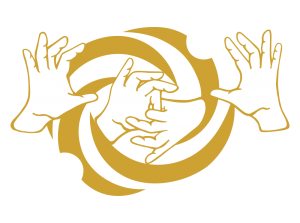

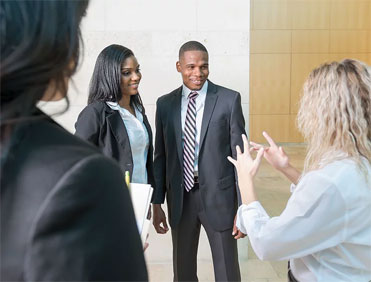

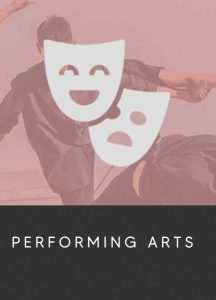
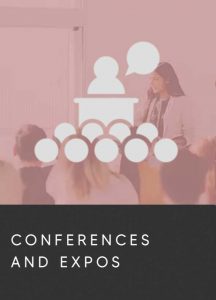
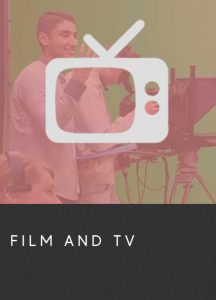

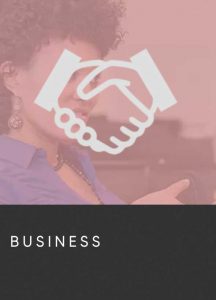
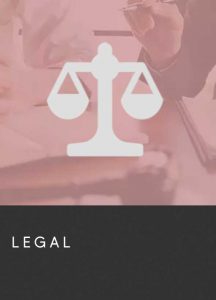


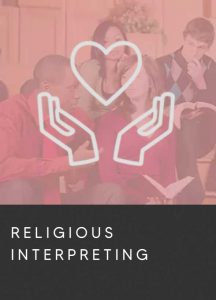
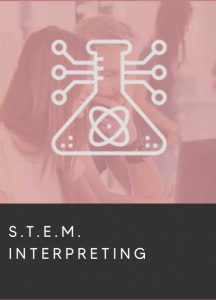
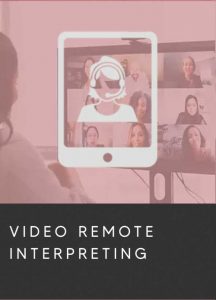
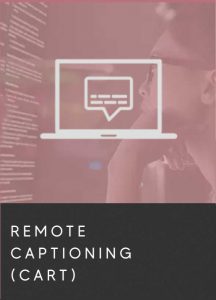


 The first step toward welcoming d/Deaf individuals to connect with an organization is to get a contract on file with a local interpreting agency that offers high quality
The first step toward welcoming d/Deaf individuals to connect with an organization is to get a contract on file with a local interpreting agency that offers high quality 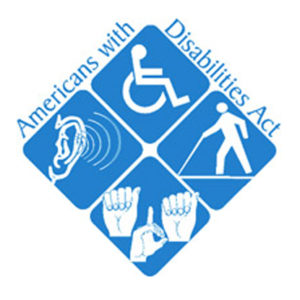 July 26 marks the anniversary of the Americans with Disabilities Act: a set of laws established to help people with disabilities gain access to society that was simply not designed for them. Since 1990, this landmark piece of legislation has improved the lives of millions of Americans by providing clarification regarding their rights to access— whether that means built-in wheelchair ramps, requesting ASL interpreters, or allowing service animals into buildings— and offering legal recourse for individuals whose rights are violated.
July 26 marks the anniversary of the Americans with Disabilities Act: a set of laws established to help people with disabilities gain access to society that was simply not designed for them. Since 1990, this landmark piece of legislation has improved the lives of millions of Americans by providing clarification regarding their rights to access— whether that means built-in wheelchair ramps, requesting ASL interpreters, or allowing service animals into buildings— and offering legal recourse for individuals whose rights are violated.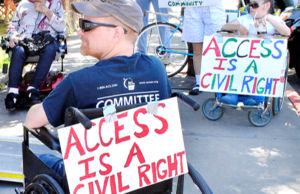 Without the hard work of determined disability rights activists, the ADA would never have been passed; and without ongoing advocacy efforts, little real change might have come from the legislation. People who do not need to reference the ADA on a regular basis to get their basic needs met are frequently unaware of their obligation to ensure equal access to their establishment / service / business. In the years since the ADA became law, people with disabilities have had to consistently perform the labor of educating people about their disabilities and what it means to be disabled in a world that favors able-bodied individuals. They must also be willing to challenge organizations to go beyond bare minimum compliance, which can sometimes mean taking on large institutions in a public way.
Without the hard work of determined disability rights activists, the ADA would never have been passed; and without ongoing advocacy efforts, little real change might have come from the legislation. People who do not need to reference the ADA on a regular basis to get their basic needs met are frequently unaware of their obligation to ensure equal access to their establishment / service / business. In the years since the ADA became law, people with disabilities have had to consistently perform the labor of educating people about their disabilities and what it means to be disabled in a world that favors able-bodied individuals. They must also be willing to challenge organizations to go beyond bare minimum compliance, which can sometimes mean taking on large institutions in a public way.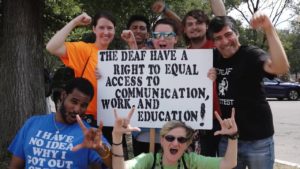
 Each time a person takes it upon themselves to challenge the institution that oppresses them, they remove a barrier for the next person— no matter how big or small. This incremental progress adds up over time. If your rights are violated, pursue further action. If your needs are not adequately met, provide feedback and pursue further action. The advocacy and awareness that each person spreads works toward creating a more educated society with advanced views of disability. Pushing back is important work!
Each time a person takes it upon themselves to challenge the institution that oppresses them, they remove a barrier for the next person— no matter how big or small. This incremental progress adds up over time. If your rights are violated, pursue further action. If your needs are not adequately met, provide feedback and pursue further action. The advocacy and awareness that each person spreads works toward creating a more educated society with advanced views of disability. Pushing back is important work!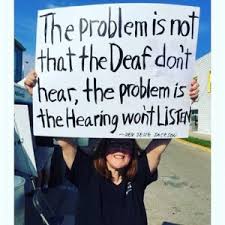 But what about allies? How can people who are not deaf or disabled help, without their position of able-bodied privilege resulting in further oppression? Where to get started?
But what about allies? How can people who are not deaf or disabled help, without their position of able-bodied privilege resulting in further oppression? Where to get started?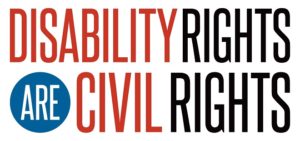 The ADA in action is more of a tool for people with disabilities than any kind of guarantee. This set of legislation only works when it is enforced, and it is up to each member of our society to help enforce it.
The ADA in action is more of a tool for people with disabilities than any kind of guarantee. This set of legislation only works when it is enforced, and it is up to each member of our society to help enforce it. An unusual tale about a young Indian woman named Geeta has been making its way around the internet after a
An unusual tale about a young Indian woman named Geeta has been making its way around the internet after a  The term deaf-mute is problematic, and it is not an appropriate way to discuss a person. Calling someone “mute” silences them and strips them of their agency— it sticks a label on them that devalues their autonomy. Mute is a loaded term which carries the distinct connotation that people who are deaf don’t have anything to say.
The term deaf-mute is problematic, and it is not an appropriate way to discuss a person. Calling someone “mute” silences them and strips them of their agency— it sticks a label on them that devalues their autonomy. Mute is a loaded term which carries the distinct connotation that people who are deaf don’t have anything to say. Mute is just one offensive term that regularly pops up in news stories about deafness from supposedly reputable news agencies. The archaic phrase “deaf and dumb” also occasionally makes its way into headline news. It seems obvious why deaf people do not want to be called dumb, yet clueless hearing reporters continue using the term.
Mute is just one offensive term that regularly pops up in news stories about deafness from supposedly reputable news agencies. The archaic phrase “deaf and dumb” also occasionally makes its way into headline news. It seems obvious why deaf people do not want to be called dumb, yet clueless hearing reporters continue using the term. Had the reporters at the major publications glanced in the AP Stylebook, they would have seen, under the entry for Deaf: “avoid using deaf-mute.” If the journalists and editors working for mainstream outlets had any deaf consultants proof reading their articles about deafness, they almost certainly would not be running stories calling deaf people “mute” “dumb” or “impaired”. Use of these damaging terms actually says far more about the perspective of the author and the lack of diversity within the news organization than anything else.
Had the reporters at the major publications glanced in the AP Stylebook, they would have seen, under the entry for Deaf: “avoid using deaf-mute.” If the journalists and editors working for mainstream outlets had any deaf consultants proof reading their articles about deafness, they almost certainly would not be running stories calling deaf people “mute” “dumb” or “impaired”. Use of these damaging terms actually says far more about the perspective of the author and the lack of diversity within the news organization than anything else. Picture this: you’re attending a lecture from a highly respected professional in your field. The lecture was well publicized and draws a large regional or national audience. When this person takes the stage to speak, however, you can hardly understand a word they say. Your peers are jotting down notes and nodding their heads in agreement, but you feel completely lost. When the lecture ends, the other attendees all begin discussing the topics amongst themselves, but once again you are left out of the conversation.
Picture this: you’re attending a lecture from a highly respected professional in your field. The lecture was well publicized and draws a large regional or national audience. When this person takes the stage to speak, however, you can hardly understand a word they say. Your peers are jotting down notes and nodding their heads in agreement, but you feel completely lost. When the lecture ends, the other attendees all begin discussing the topics amongst themselves, but once again you are left out of the conversation. Providing qualified Platform Interpreters, also known as Conference Interpreters, helps ensure that people who are deaf can access and participate equally in organized events such as lectures, seminars, workshops, trainings, and professional development events. The services of these interpreters will be utilized during formal presentations, breakout sessions, and all social opportunities throughout the conference. High quality Platform Interpreters possess a skill set which enables them to accurately communicate the important and often specific information being presented in real-time.
Providing qualified Platform Interpreters, also known as Conference Interpreters, helps ensure that people who are deaf can access and participate equally in organized events such as lectures, seminars, workshops, trainings, and professional development events. The services of these interpreters will be utilized during formal presentations, breakout sessions, and all social opportunities throughout the conference. High quality Platform Interpreters possess a skill set which enables them to accurately communicate the important and often specific information being presented in real-time. People around the world watched on television as the interpreter at Nelson Mandela’s funeral signed nonsense to deaf South Africans. It was a very public example of an unfortunate problem. This type of service is unacceptable, and it is the responsibility of event organizers to make sure that deaf attendees get the quality of communication access that they deserve.
People around the world watched on television as the interpreter at Nelson Mandela’s funeral signed nonsense to deaf South Africans. It was a very public example of an unfortunate problem. This type of service is unacceptable, and it is the responsibility of event organizers to make sure that deaf attendees get the quality of communication access that they deserve. Simultaneous interpreting can be a real challenge without sufficient preparation. To accurately represent both event speakers and deaf consumers, qualified Conference Interpreters will do their homework. They will research the mission of the organization and the intention of the event. They will learn the names of the presenters and a little bit about their background. A great Platform Interpreter will request conference documents, multimedia, and speakers notes in advance. They know the speaker’s motives and are able to faithfully deliver their message.
Simultaneous interpreting can be a real challenge without sufficient preparation. To accurately represent both event speakers and deaf consumers, qualified Conference Interpreters will do their homework. They will research the mission of the organization and the intention of the event. They will learn the names of the presenters and a little bit about their background. A great Platform Interpreter will request conference documents, multimedia, and speakers notes in advance. They know the speaker’s motives and are able to faithfully deliver their message. Conferences are whirlwind events which can overwhelm individuals who aren’t skilled at managing multiple tasks. Interpreters will be utilized during all the different presentations, breakout sessions, workshops, socializing, and networking possibilities
Conferences are whirlwind events which can overwhelm individuals who aren’t skilled at managing multiple tasks. Interpreters will be utilized during all the different presentations, breakout sessions, workshops, socializing, and networking possibilities Depending on the length of the event, the type of event, and the number of deaf attendees present, interpreters will be working in a team of at least two, possibly more ASL interpreters. Supporting the team is one of the most important roles of a Conference Interpreter. Interpreters must communicate their needs while meeting the expectations of other interpreters and deaf consumers.
Depending on the length of the event, the type of event, and the number of deaf attendees present, interpreters will be working in a team of at least two, possibly more ASL interpreters. Supporting the team is one of the most important roles of a Conference Interpreter. Interpreters must communicate their needs while meeting the expectations of other interpreters and deaf consumers. Qualified Conference Interpreters will ensure they have adequate working conditions. This includes contacting the event organizer and letting them know the technical requirements or providing service. Interpreters should also be ready to educate hearing entities about the basic function of an ASL interpreter and how to work with one. In some instances, interpreters must advocate to be on stage, on camera, or near a presenter.
Qualified Conference Interpreters will ensure they have adequate working conditions. This includes contacting the event organizer and letting them know the technical requirements or providing service. Interpreters should also be ready to educate hearing entities about the basic function of an ASL interpreter and how to work with one. In some instances, interpreters must advocate to be on stage, on camera, or near a presenter.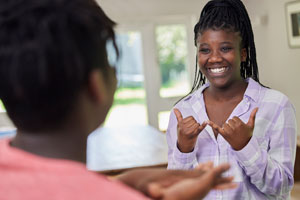 Everyone at the office calls your Deaf coworker Diane, but she is better known in the Deaf community as “Bright.” Bright is a genuine person who is always smiling and positive. Her cheerful name sign captures her personality way better than the name “Diane” ever could!
Everyone at the office calls your Deaf coworker Diane, but she is better known in the Deaf community as “Bright.” Bright is a genuine person who is always smiling and positive. Her cheerful name sign captures her personality way better than the name “Diane” ever could! Once you have a name sign, good luck changing it on your own! On the other hand, deaf people might change your name sign if they feel a different name suits you better. For example, I was given a name sign by my mother who is deaf. My original name sign is an “L” that is waving, because as a child I was always waving at everyone. Once I moved to New York City and became involved in a much larger Deaf community, people began referring to me as “LC,” which identifies me by my initials so I can not be confused with someone else who has the same name sign. In my intimate circles, I remain true to my birth name sign, but in NYC my name sign has evolved.
Once you have a name sign, good luck changing it on your own! On the other hand, deaf people might change your name sign if they feel a different name suits you better. For example, I was given a name sign by my mother who is deaf. My original name sign is an “L” that is waving, because as a child I was always waving at everyone. Once I moved to New York City and became involved in a much larger Deaf community, people began referring to me as “LC,” which identifies me by my initials so I can not be confused with someone else who has the same name sign. In my intimate circles, I remain true to my birth name sign, but in NYC my name sign has evolved. An ASL name is so much more than a nickname, it becomes a major part of your Deaf identity. Because an individual can not simply change their own name sign, these names carry a history and personality all their own. Each facial expression and classifier, which is a descriptive handshape, gives a little insight into who the individual is and how they are viewed by others. Take my deaf niece Jaisy, for example, who is known as Same. When Jaisy was just a newborn, her big sister took one look at her and signed “same” because the baby had the same hair and eye color as her. Her name is Jaisy, but people who know her use the sign for “same” to represent her in conversation. When she gets a little older, her mother will give her a new sign name that is more appropriate for her growing personality.
An ASL name is so much more than a nickname, it becomes a major part of your Deaf identity. Because an individual can not simply change their own name sign, these names carry a history and personality all their own. Each facial expression and classifier, which is a descriptive handshape, gives a little insight into who the individual is and how they are viewed by others. Take my deaf niece Jaisy, for example, who is known as Same. When Jaisy was just a newborn, her big sister took one look at her and signed “same” because the baby had the same hair and eye color as her. Her name is Jaisy, but people who know her use the sign for “same” to represent her in conversation. When she gets a little older, her mother will give her a new sign name that is more appropriate for her growing personality.





